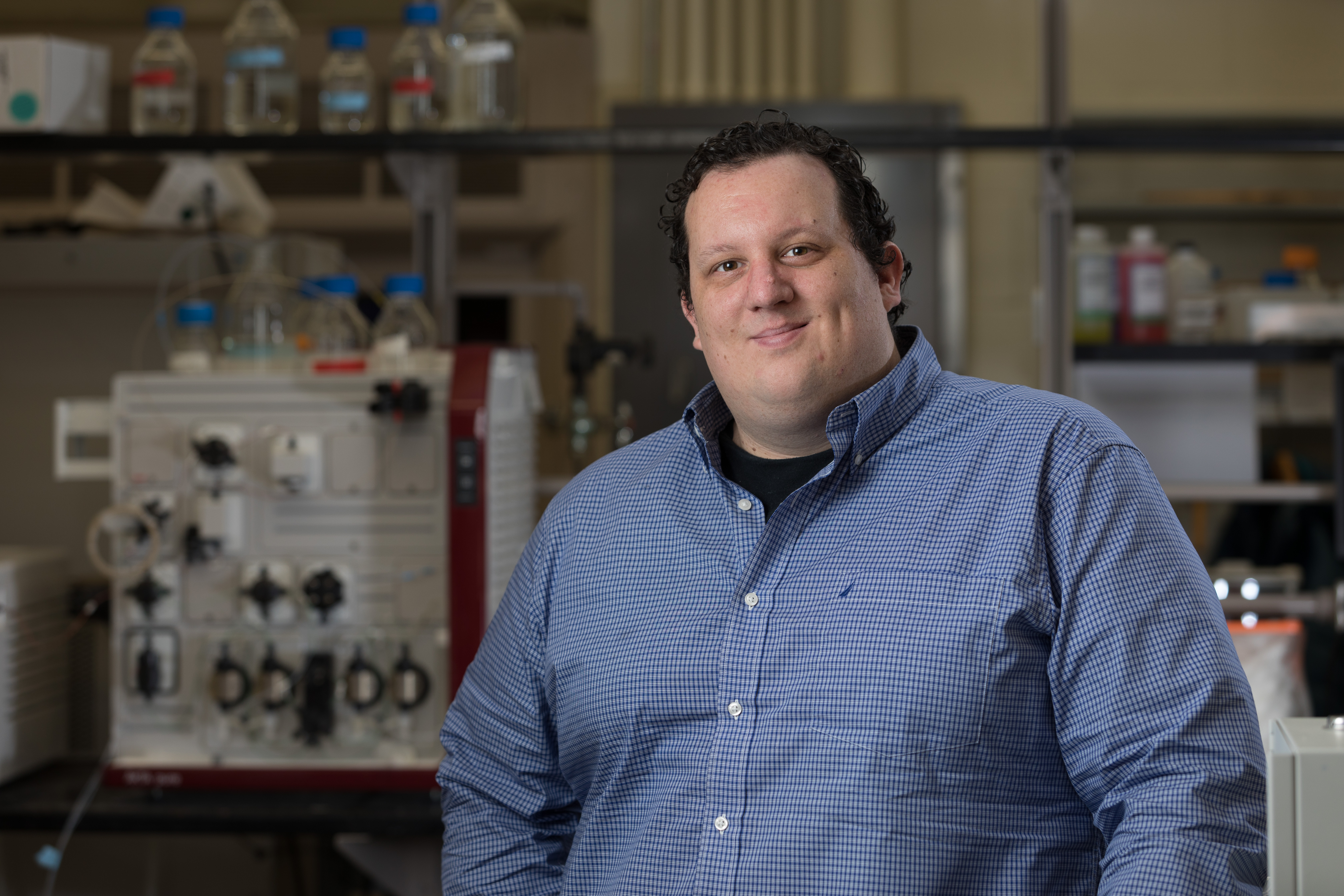“Silencing” bacteria may give scientists an antibiotic-free route to controlling infections and balancing the microbiome.

Ever since penicillin was introduced over 90 years ago, bacteria have been finding ways to resist antibiotic treatments. That’s a big problem for human health, as so-called “superbugs” are not only harder to treat, but spread more easily. More than two million people get an antibiotic-resistant infection every year in the United States, according to the Centers for Disease Control and Prevention.
Mikael Elias, assistant professor of biochemistry, molecular biology, and biophysics, believes there may be a better way to fight back against the growing bacterial threat. In recent research, Elias found that cutting off bacteria’s ability to communicate hampers the way their population grow, potentially unlocking a way to limit harmful diseases and even control which species of bacteria thrive in a given environment.
“The current paradigm in infection treatment is to wipe everything out,” he says. “The big picture of my research is to figure out if there is a possible alternative paradigm, where we can selectively either control their behavior or possibly control what bacteria is there and what bacteria is not there.”
Bacteria adapt to their environments by forming “biofilms” — secretions of sticky molecules that help them clump together and form organized populations. About 99 percent of bacteria exist in this state in nature. It’s in biofilms that they have the strongest effect on their environments — and become a thousand-fold more resistant to antibiotics.
“The current paradigm in infection treatment is to wipe everything out. ... The big picture of my research is to figure out if there is a possible alternative paradigm.”
Bacteria only form biofilms, however, when they can communicate. In much the way humans must coordinate to build functional societies, bacteria need to relay molecular signals to collectively grow and thrive — and that’s where Elias’s research comes in. He has designed an enzyme that binds to and cuts the signaling molecule that bacteria produce, intercepting communications. The enzyme can target signals for a specific type of bacteria, allowing for precise control in managing bacterial populations.
“What we are showing at this point is that we can use our molecules to inhibit biofilm formation, but in a very different way than antibiotics,” he says. “This research is really the first comprehensive description of what happens when you suppress communication.”
In industry, biofilms are mostly a nuisance. An effective way to prevent them could, for example, help protect crops from devastating microbial infections, limit the buildup that clogs pipes, and mitigate the risk of foodborne illness. When it comes to health, though, biofilms play a more complex role. Some diseases may be best treated not just by suppressing grow among certain bacteria, but by allowing other types to thrive. Balancing the microbiome — the community of different microbes living in and on us — could provide scientists with a better way treat a wide range of diseases.
Will bacteria grow to resist signal disruption? Elias believes it’s unlikely. The change doesn’t kill bacteria, so adapting isn’t a matter of life and death. What’s more, bacteria that can’t communicate (which already exist in nature from rare mutations) tend not to prosper in their environments. With the foundation of this approach in place, he looks forward to delving further into the effects of knocking out communications on a molecular scale.
“Now we want to understand how these changes in bacterial populations work, and possibly if we can predict them,” he says. “That’s an entirely different level of understanding that we don’t have at this point.” — Kevin Coss
Elias’s research, published in Frontiers in Microbiology and ChemBioChem, was supported in part by the state-funded MnDRIVE research initiative. Minnesota Sea Grant funded the project. Explore Elias' new studies in detail here and here.